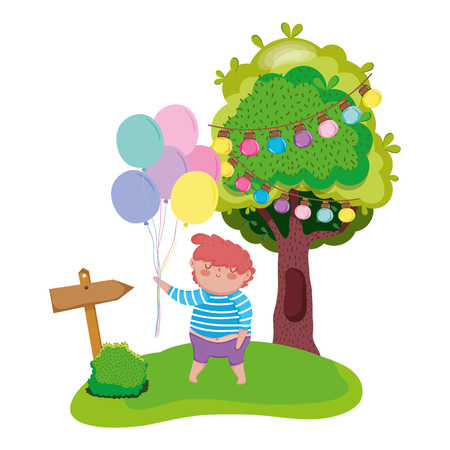Stepping into the Wild: Joining the Trail Group
The first morning I joined the local trail maintenance group in the British countryside, a cool mist hung over the fields, and the air buzzed with an expectant quiet. My boots crunched over dewy grass as I approached the meeting point—a humble village car park bordered by old stone walls and hawthorn hedges. Heart thumping with a cocktail of curiosity and nervousness, I wondered what sort of folk would gather here, drawn by a shared urge to give back to the land. Would I fit in? Would I know what to do? These questions swirled through my mind, mixing with the thrill of stepping out beyond my comfort zone. There’s something uniquely British about taking solace in the countryside, where footpaths are arteries winding through ancient woods and rolling hills, binding us to stories older than ourselves. As the group assembled—cheery faces beneath woolly hats, hands clasping steaming flasks—I felt that subtle, unspoken sense of belonging that comes from joining others in purpose. It was more than just volunteering; it was becoming part of a living landscape, ready to learn its secrets and leave it better for those who follow.
Learning from the Land: Hands-On Skills and Heritage
As my journey with the trail maintenance group began, I found myself swept into a world where ancient skills and living landscapes entwined. Every weekend, boots laced and gloves donned, we gathered at dawn in the misty heart of the countryside—hedgerows heavy with dew, birds stirring quietly overhead. The work was as much about heritage as it was about physical effort. Under the watchful eye of seasoned volunteers, I learned to mend paths scoured by rain and time, wielding spades and mattocks with growing confidence. Path repair, I soon discovered, was a dance between tradition and necessity, each stone placed carefully to guide walkers while safeguarding fragile ground beneath.
There was artistry in every task. Hedge-laying became an exercise in patience and precision—a centuries-old craft shaping both wildlife habitat and rural identity. The rhythm of our saws, the scent of fresh-cut hazel, and the gentle chatter of local dialects wove together a tapestry of belonging. Dry-stone walling tested my resolve; hands raw from lifting cool slabs, eyes searching for the perfect fit. Each wall told stories of ancient boundaries and generations past—silent witnesses to shifting seasons and ways of life.
Traditional Skills Learnt on the Trail
| Skill | Description | Connection to British Heritage |
|---|---|---|
| Path Repair | Restoring eroded paths using native materials and traditional methods. | Preserves access for walkers; echoes historic rights of way. |
| Hedge-Laying | Interweaving live branches to form living fences that regenerate each year. | Supports wildlife corridors; upholds rural landscape character. |
| Dry-Stone Walling | Building walls without mortar using carefully chosen stones. | Ages-old craft defining field boundaries; a hallmark of British uplands. |
The Stories Behind Every Stone
Through muddy hands and aching backs, we absorbed tales that shaped these hills—of drovers moving cattle along ancient tracks, shepherds marking lambing time by blossoming blackthorn, and communities gathering for wassails or cider pressing. Every task carried echoes of custom: pausing mid-morning for tea poured from battered flasks, swapping memories of hard winters or bumper harvests. In learning these skills, we were not only mending trails but weaving ourselves into the fabric of Britain’s countryside—a living heritage shaped by toil, tradition, and quiet acts of stewardship.

3. Through the Seasons: Landscapes and Changing Tasks
There is a certain poetry in following the trail as it weaves through Britain’s shifting seasons. Each month brings its own character, and our maintenance work bends to the landscape’s needs. Winter is a test of resolve; we huddle into waterproofs, boots squelching in sodden earth as we clear debris left by blustering storms. The woods are stripped bare, save for the mossy greens and silvery threads of drizzle that blur the edges of the path. Yet there is camaraderie in sharing steaming flasks and laughter beneath grey skies, each of us finding warmth in purpose.
Come spring, the trails awaken with the land. Our boots tread softly where bluebells gather in delicate carpets between ancient trees, careful not to disturb their fragile beauty. There’s a gentler rhythm as we trim back encroaching brambles and repair steps worn by winter walkers, always mindful of nesting birds and the first bees bumbling through wild garlic blooms. It’s a time when hope stirs—the promise of lighter evenings and kinder weather draws more hands to help, and every repaired stile or cleared culvert feels like a small celebration.
Summer stretches golden and drowsy over hills and hedgerows. Our tasks shift again: keeping paths open beneath exuberant growth, taming nettles and bracken before they claim the way entirely. The scent of warm earth rises with each swing of a sickle, and skylarks trill overhead as we pause for sandwiches beneath sun-dappled oak canopies. The countryside hums with life, reminding us why these footpaths matter—not just for walkers, but for all who share this place.
Autumn brings a different kind of beauty—and challenge—as leaves turn russet and gold, carpeting the trails in slippery layers. We dig out drains to keep water from pooling on steep slopes, patch up eroded verges, and brace ourselves for colder days ahead. As dusk falls earlier each week, there’s a quiet satisfaction in knowing our work helps others enjoy these same views and changing skies.
Through it all, our group moves to nature’s tempo—sometimes brisk with urgency, sometimes slow and contemplative—always learning from both the land and one another. Each season leaves its mark not only on the landscape but also on those who care for it, deepening our connection to this patchwork of fields, forests, and footpaths that make up Britain’s heart.
4. Banter, Biscuits, and Bonds: The Social Heartbeat
If there’s one thing that defines a year with a British trail maintenance group, it’s the irresistible spirit of camaraderie that flourishes alongside brambles and bluebells. Every gathering begins with a burst of laughter as familiar faces greet each other in the car park, boots squelching on dew-laden grass. There’s always good-natured banter about muddy trousers or whose thermos boasts the strongest brew. Among the mossy logs and tangled undergrowth, humour becomes our shared language—whether gently ribbing someone for their lopsided stile or swapping tales of past misadventures along the fells.
Yet, it is during the ritual tea breaks that true bonds are forged. A battered flask emerges from a backpack, followed by an assortment of biscuits—bourbons, digestives, maybe even a cheeky Jaffa Cake or two. No matter how far-flung or windswept the location, someone always manages to produce a packet of custard creams, as essential to morale as well-oiled loppers. We huddle together on damp stones or fallen trunks, steam rising from mugs, stories flowing freely: tales of grandchildren, garden woes, or memories of hill walks in years gone by. Here in this makeshift circle, we become more than volunteers—we become friends.
Traditions That Bind Us
The social rituals may seem simple, but they’re woven deeply into the fabric of our group’s culture. Over time, I’ve come to cherish these moments just as much as clearing nettles or rebuilding steps. Let me share a snapshot of these traditions:
| Time | Ritual | Typical Conversation |
|---|---|---|
| Arrival (8:30am) | Banter while booting up | Weather grumbles; weekend plans |
| Mid-morning (10:30am) | First tea break | Biscuit debate; funny mishaps |
| Lunchtime (12:30pm) | Shared sandwiches & stories | Gardening tips; local news |
| End of day (3:00pm) | Packing up & parting words | Next meet-up; thanks all round |
Weaving Friendships Amid Nature’s Embrace
This easy companionship draws people from all walks of life: retirees seeking purpose after busy careers, students eager for fresh air between exams, newcomers hoping to feel at home in a new village. Each brings their own stories and skills—the retired builder who knows every trick for fixing a kissing gate; the amateur botanist who points out rare orchids beside the path. Mud-caked boots and rain-splattered jackets soon blur distinctions, making space for laughter and learning alike.
A Place Where Everyone Belongs
The magic lies in these small acts—a shared biscuit, a helping hand over a slippery stile, a joke told as rain drums on our hats. By year’s end, I find myself looking forward not just to the work itself but to these rituals that knit us together. In giving back to the countryside, we find ourselves gifted something unexpected: belonging.
5. Challenges and Small Triumphs: From Blisters to Beauty
The British countryside, with its rolling hills and winding footpaths, is as unpredictable as it is breathtaking. Over the past year with the trail maintenance group, I’ve learnt that every step along these ancient tracks brings its own set of challenges. One week, we might be wrestling with stubborn brambles that seem determined to reclaim the right of way; another, we’re caught out by a sudden downpour, boots squelching through thick mud while clouds hang low over the hedgerows.
It’s not always picturesque. There are mornings when fingers numb from cold fumble with tools, or when nettles leave stinging reminders on bare skin. The work can be hard graft—digging drainage channels under leaden skies or hauling wheelbarrows of gravel up steep inclines. Yet, amidst the blisters and aching muscles, there’s a quiet magic in overcoming each obstacle together. Every member of our ragtag team brings a different strength: someone knows just how to coax a stubborn gate back into working order; another has an eye for spotting rare wildflowers hiding at the path’s edge.
The small victories matter most. When we clear a stretch overwhelmed by overgrowth and watch sunlight spill onto the path for the first time in months, it feels like unveiling a secret meant to be shared. Spotting a hedgehog scuttling across fresh-cut grass, or hearing walkers’ laughter carried on the wind, reminds us why we persevere. Every battered pair of gloves tells a story—not just of toil, but of care for these shared spaces.
These trails are more than just lines on a map; they are living corridors connecting villages, woodlands, and people. Preserving them means more than keeping them tidy—it’s about safeguarding habitats for birdsong at dawn and foxes at dusk, about ensuring that anyone can wander here and feel the hush of nature wrap around them.
Looking back over twelve months of effort, I feel proud not only of what we’ve achieved together but also of how each challenge has deepened my connection to this landscape. The transformation from tangled chaos to open pathway is a testament to resilience—of both nature and those who care for it. Each small triumph builds towards something lasting: trails that welcome all who seek solace in the wild heart of Britain.
6. Giving Back: A Deeper Connection to Britain’s Wild Places
There is a quiet satisfaction that comes from giving back to the land, one footstep and one stone at a time. After a year spent with my trail maintenance group, I have found a sense of belonging that feels as old as the hills themselves. Each time I brush away brambles or rebuild a stile, I feel more deeply rooted in the landscape—woven into the living tapestry of Britain’s countryside.
We work not only for ourselves but for those who will come after us: ramblers seeking solace on misty mornings, families picnicking by bluebell woods, and solitary wanderers searching for wildness. The knowledge that our efforts help keep ancient paths open—tracks worn by boots over centuries—gives our labour a sense of legacy. These footpaths are more than lines on a map; they are threads connecting communities, histories, and hearts.
There is also camaraderie in shared purpose. Rain or shine, we gather with thermos flasks and battered tools, swapping stories and laughter as we mend what time and weather wear down. In these moments, I have discovered a fellowship that rivals any village pub or cricket pitch—a kinship forged by mud-streaked hands and common cause.
The British countryside is generous to those who care for it. As we restore its paths, it gives back in kind: skylarks singing above moorland, foxgloves nodding in dappled light, the gentle hush of wind through beech leaves. These gifts remind us why stewardship matters—not just for today, but for the generations yet to come.
In helping to protect these wild spaces, I have found both peace and purpose. Walking home across dew-soaked fields at dusk, I know that our small acts echo far beyond ourselves. We are caretakers now—guardians of trails that invite everyone to discover the quiet magic of Britain’s green heart.


